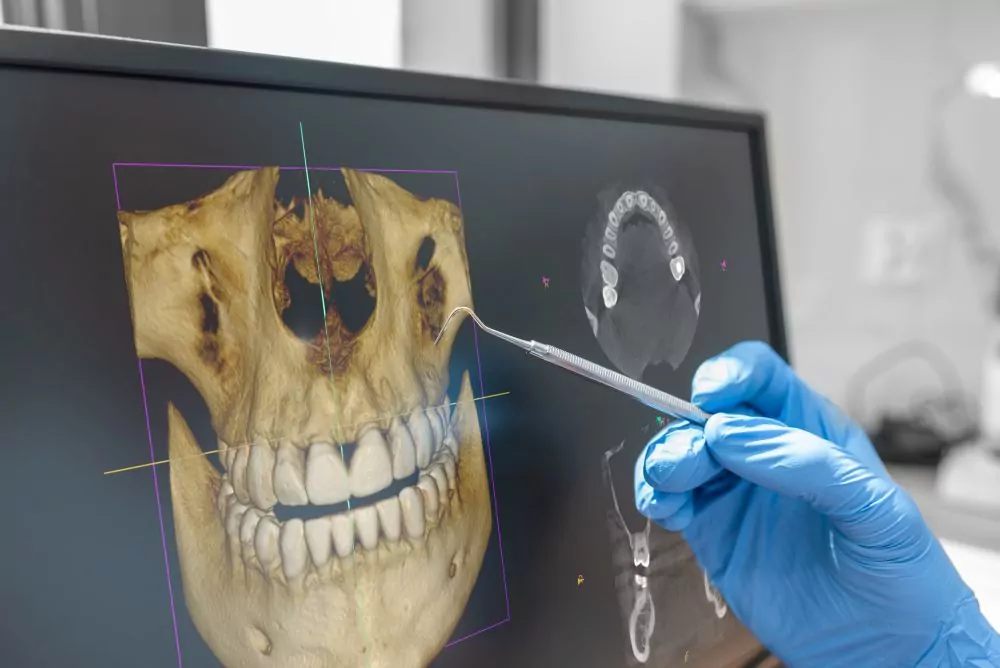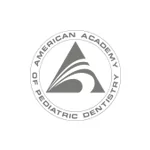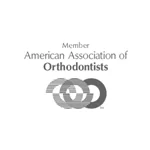Dental X-rays play a key role in oral health. They enable a dentist to review their patients’ oral health development and identify underlying problems related to the teeth, jaw, and soft tissues of the mouth. Plus, X-rays help a dentist provide an accurate diagnosis and determine the best course of action to treat oral health issues.
But one thing every patient wants to know is: are dental X-rays safe?
The Super Dentists are concerned about your family’s dental and orthodontic care. And we’re also concerned about your safety, too! Since many parents ask us all the time about x-rays and are dental x-rays safe, we thought it would be a great idea to address the question here.
But first, why are dental x-rays ordered in the first place? Which common (and not so common) dental or orthodontic conditions warrant dental X-rays?

Which Conditions Require Dental X-Rays?
There are several other reasons why a dentist may recommend dental X-rays, too. These reasons include:
- Monitor Oral Health Injury Healing and Recovery: If a child or adult suffers a mouth injury, a dentist may use an X-ray to track the patient’s healing progress and ensure that he or she can make a full recovery.
- Identify Oral Infections: Dental cavities, gingivitis, and other oral infections are problematic. Thanks to an X-ray, a dentist is better equipped than ever before to identify an oral infection before it gets out of hand.
- Determine If an Orthodontic Treatment Is Necessary: A dentist sometimes uses an X-ray to determine whether to recommend an orthodontic treatment.
Not all dental X-rays are created equal. In fact, a dentist may recommend one or more of the following types of dental x-rays:
- Bitewing: Examine the crowns of the upper and lower teeth in one section of the mouth, identify cavities in tough-to-reach areas of the mouth and assess fillings.
- Periapical: Display a tooth from the crown to the root in order to examine one or two teeth for root problems, cavities, and oral health issues that affect the surrounding jaw bone.
- Panoramic: Show the entire mouth and is often used to track a child’s tooth development to determine if orthodontics is necessary.
Occlusal: Illustrate the arch of the teeth from either the top or bottom jaw. - Orthodontic: Depict the side of a child’s head.
- Cone Beam Computerized Tomography (CBCT): Provide a 3D view of the patient’s mouth to help a dentist assess the development and space of their teeth.
The best type of dental x-ray for identifying an issue depends on the unique situation. Different types of x-rays are used to diagnose different dental problems, and a combination of x-rays may be necessary to provide a comprehensive assessment.
In general, the two most common types of x-rays used in dentistry are bitewing and periapical x-rays. Bitewing x-rays are commonly used to diagnose cavities and evaluate the health of the teeth and gums.
They show the crown portions of the upper and lower teeth, and can detect decay between teeth, bone loss due to gum disease, and other dental problems.
Periapical x-rays are used to evaluate the entire tooth, from the crown to the root, and can diagnose issues such as abscesses, cysts, or impacted teeth. They are useful in assessing the overall health of the tooth structure and root, and can help dentists plan for treatment.
Are Dental X-Rays Safe?
X-rays emit some radiation, but according to the American Dental Association (ADA), radiation exposure due to dental X-rays is minimal in comparison to both human-made and natural radiation sources. Americans receive an average radiation dose of about 0.62 rem (620 mrem) annually, the U.S. Nuclear Regulatory Commission reports.
Meanwhile, the ADA notes that dental radiographs account for roughly 2.5% of the effective radiation dose received from all medical radiographs and fluoroscopies (medical X-ray imaging procedures).
Safety Guidelines & Precautions
X-ray technologies and methods vary in dental practices and medical offices across the United States. The Super Dentists use the latest technology at its six San Diego offices.
For example, the ADA promotes Image Gently, a national X-ray safety campaign that was launched in 2008. Image Gently encourages dentists and other medical professionals to limit radiation doses during pediatric medical imaging exams. It also offers the following X-ray safety guidelines for pediatric dental professionals:
- Use X-rays based on a patient’s needs, not as a routine
- Choose the fastest image receptor available
- Select Cone Beam CT only when necessary
- Focus the X-ray beam exclusively on the patient treatment area
- Provide a patient with a thyroid collar or shield during an X-ray procedure
- Limit X-ray exposure to a “child-size” dose
The ADA is one of more than 80 healthcare organizations to promote Image Gently. But as of today, there are no standard X-ray safety guidelines for all U.S. dental practices and medical offices.
This means the amount of radiation exposure from an X-ray may vary between dental and medical procedures. It also means the amount of radiation exposure from an X-ray may differ based on where a patient goes for dental or medical treatment.
According to the ADA’s own records, a person in good health with lowered risk of dental disease can have dental X-rays taken every 24 to 36 months. This figure varies with the patient’s age, and rest assured The Super Dentists take every precaution to promote a healthy smile for every patient. This includes optimal scheduling for all dental X-rays.
How Many Dental X-Rays Are Safe in a Month?
The amount of dental x-rays that are considered safe in a month depends on various factors, such as the age of the patient, their medical history, and the type of x-ray being taken.
In general, the amount of radiation exposure from dental x-rays is relatively low and considered safe for most people. The American Dental Association recommends that dentists use clinical judgment to determine the frequency of x-rays for each individual patient, taking into account their specific needs and risks.
For most adults, dental x-rays are typically recommended once every 24 to 36 months for routine check-ups. However, in certain cases, such as for patients with a history of dental problems or those undergoing orthodontic treatment, more frequent x-rays may be necessary.
Are X-Rays Used to Find Impacted Teeth?
An X-ray can help in identifying impacted teeth by producing an image of the teeth and jaws that can show the position, size, and shape of the impacted tooth.
When a tooth is impacted, it means that it is trapped below the gum line, and it has not emerged fully or at all. The impacted tooth can cause pain, swelling, and other dental problems, and it may require extraction or surgical intervention to resolve the issue.
To identify impacted teeth, dentists typically use panoramic X-rays or cone beam CT scans, which provide a complete view of the teeth and jaws. These images allow the dentist to visualize the impacted tooth and determine its position and orientation in relation to the other teeth and surrounding structures.
The X-ray can also reveal any potential complications that may arise due to the impacted tooth, such as infections or damage to adjacent teeth.
It’s important that you don’t wait on issues like this due to fears over the level of radiation. The amount of radiation you’ll undergo is not worse than leaving your oral health issues unanswered.
How Do Super Dentists Handle Patient X-Rays?
At The Super Dentists of San Diego, we strive to provide safe, effective dental care for both children and adults. As part of our commitment to our patients and their health and well-being, we use state-of-the-art X-ray technologies to help protect kids and adults from radiation exposure. Are dental X-rays safe?
They certainly are at The Super Dentists! At our offices, we think every dental visit should be as extraordinary as your child, and this includes sensible, as-needed dental X-rays.
Our zero- and no-radiation cavity detection technologies allow us to use autofluorescence to identify cavities and tissue damage in the mouth. They help us accurately detect dental issues and provide an instant diagnosis of cavities and cracks in the teeth. Then, if we identify an oral health problem, we can treat only the diseased area accordingly.
The Super Dentists provides digital, panoramic, and cephalometric X-rays as well. Our digital X-rays are instantaneous, and our X-ray results can be shared with medical caregivers worldwide. Whereas the average dental office’s bitewing or posterior-anterior (PA) X-rays emit 0.5 mrem of radiation, our digital X-rays emit approximately 0.08 mrem of radiation.
Comparatively, our panoramic and cephalometric X-rays are used for orthodontic treatments. They provide 2D images of a patient’s mouth and jaw, as well as help us diagnose a patient’s oral health problems and map out a personalized treatment plan. That way, we can best help a patient achieve a healthy, beautiful smile.
Why Does It Feel Like Dentists are Always Pushing X-rays?
The Super Dentists only perform dental X-rays when they are absolutely necessary and we protect our patients by having them wear a lead apron to protect their organs against the minimal radiation exposure during the X-ray.
We will quickly and safely perform the X-rays, review the results and offer a treatment recommendation based on our findings. If a patient has any concerns or questions before or after an X-ray procedure, just ask your dental technician.
The Bottom Line on Dental X-Ray Safety
A child’s safety is a parent’s top priority. However, dental practices use different X-ray technologies that emit varying amounts of radiation.
At The Super Dentists, the health and well-being of our patients guide our day-to-day efforts. We understand the radiation exposure dangers associated with X-rays, and to combat these risks, we deploy the latest X-ray technologies. Our team takes the maximum precautions to keep patients safe during X-ray procedures and performs X-rays on an as-needed basis.
We take into consideration X-ray frequency, family dental history, and other crucial factors to ensure each patient is comfortable with their treatment and we help our patients weigh the pros and cons of X-ray procedures so they can make an informed decision based on their personal needs.
The Super Dentists is all about safety – and giving each patient an extraordinary experience every time they visit our office. Come see why 1 in every 5 kids in San Diego is a Super Dentists kid!
Dental X-rays may seem complicated at first, but The Super Dentists is happy to help patients understand X-rays and X-ray safety. If you need more information related to the question, “are dental X-rays safe,” don’t hesitate to contact us.
To find out more about our dental X-rays or to schedule a consultation with one of our dentists, please contact us today at 1 (855) GO SUPER, or text The Super Dentists at 1 (844) 765-1234. You can also schedule your exam, including x-rays online.
If you’re ready to take positive steps toward ensuring your child has optimal dental health, you can schedule an appointment today!









